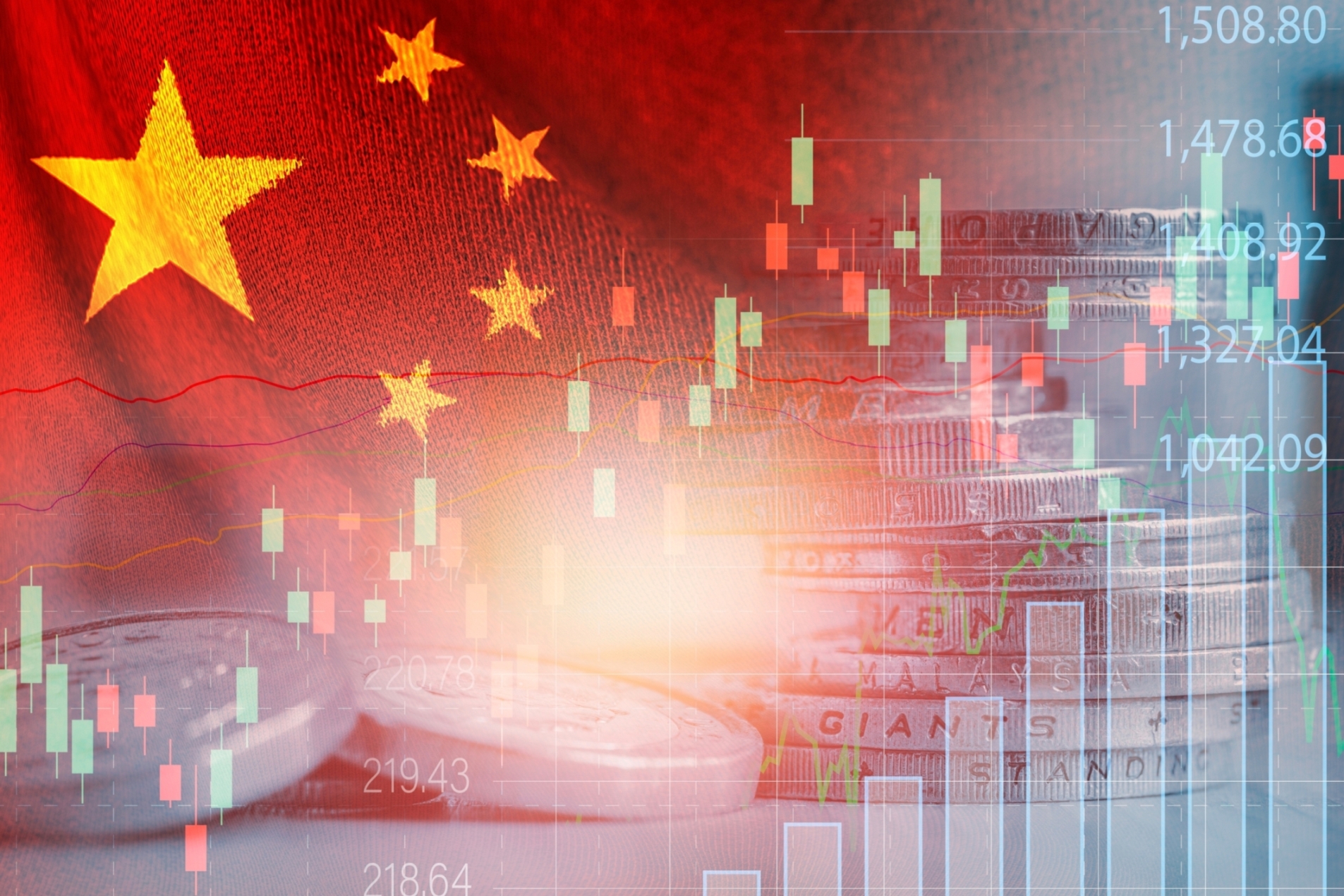Abstract: Geoeconomics is at the heart of containment strategy as China mounted its belligerence and violated the global rule-based order. This led to an emerging consensus at the global level powered by the US to tackle the imminent threats posed by China within the established framework of international order. The US’s underlying intent is to put a cooperative economic model to deal with the belligerent state that poses challenges to global peace.
Problem statement: How to assess the US’ latest geoeconomic initiative in light of China’s growing assertiveness in Indo-Pacific (IP) geopolitics?
Bottom-line-up-front: The Indo-Pacific is the new theatre of great power rivalry, and geoeconomics is the strategic tool to stop China in the region and beyond.
So what?: Geoeconomics offers a level playing field for all stakeholders in the IP region to engage and address the common concern of a free and open area for global trade.

Source: shutterstock.com/Dilok Klaisataporn
Bringing Leading Indo-Pacific Economies Together
On May 23, US President Joe Biden showcased the Indo-Pacific Economic Framework (IPEF)[1] in the presence of the Prime Ministers of India and Japan. As a new geoeconomic bloc, the framework brings together leading Indo-Pacific economies like Japan, the US, India, South Korea, Australia, and ASEAN. Its existence is a demonstration of the fallout of the Chinese belligerence and the consensus among the democracies of the region to stand up to Beijing.
China’s Expansionist Approach
The geopolitics of the Indo-Pacific would be incomplete without mentioning China’s dramatic rise. In the past two decades, China has constantly worked to enhance its economic, military, technological, and political might after its inclusion in the World Trade Organization. The critical facets of this geopolitical reality witnessed by the world include increasing assertive territorial claims in the maritime domain, forcing nations to fall into the ‘debt trap,’ and creating a parallel set of international institutions. With a China-centric approach, the People’s Republic tries to undermine the current global order and the rule of law. In recent years, Beijing has tirelessly pursued land border disputes with neighboring nations and assumed assertive stances in the Indo-Pacific region, including the never-before military fortification and the constant motivation to replace the US and its dominance in the Western Pacific region.
With a China-centric approach, the People’s Republic tries to undermine the current global order and the rule of law.
The Chinese expansionist approach has been evidently constant. Its Belt and Road Initiative (BRI) is a crucial instrument for actualizing expansionist ambitions and increasing military presence. China intends to solidify and strengthen the military logistics component to pave the path for the People’s Liberation Army (PLA) to project its might to the greater vicinity. It is also exploiting its economic ties with the countries in the region to increase its foothold. Consequently, most BRI recipients have fallen prey to ‘debt trap’ diplomacy and presented with the fait accompli of Chinese hegemony[2]. China has been prudently using states with financial problems by funding them in the short-term and medium-term, thereby using this as a carte blanche to meddle in their internal affairs and financial autonomy.
Beijing has also employed threatening tactics and approaches with the Southeast Asian coastal nations to achieve its interests regarding resources. China has constantly bullied the nations on shipping lanes while repeatedly attempting to get single-handed domination in the region with ambitions to overthrow international law for its own greater good[3]. The states in the neighborhood, both land and maritime, find this behaviour a considerable threat to their sovereignty. The Nine Dash Line claim and constant intrusions in the exclusive economic zones of maritime states have proved their fears right. This is a challenge to the free and open Indo-Pacific paradigm, which will have far-reaching consequences on global trade and sea lanes.
After the US withdrew from the Trans-Pacific Partnership under the Trump administration for financial reasons and the former president’s “America First” policy, regional stakeholders, specifically Southeast Asian countries like Indonesia, Singapore, and Malaysia, felt a void about the US geoeconomic presence in the region. However, from the beginning, the Biden administration was determined to introduce the IPEF to convince partner nations that its Indo-Pacific strategy is geoeconomically sound and will serve as a decisive element concerning the region[4].
The Biden administration was determined to introduce the IPEF to convince partner nations that its Indo-Pacific strategy is geoeconomically sound and will serve as a decisive element concerning the region.
Through the IPEF, the US intends to project itself as the economic power in the region. The IPEF entails four key pillars: 1) a connected economy, 2) a resilient economy, 3) a clean economy, and 4) a fair economy. Through this, the participating nations clearly signal that they are reducing their economic dependence on China. China enjoys a large manufacturing base monopoly and has significant control over the global supply chains. The democratic countries in the region seem to understand that dealing with rising China in a prudent style shall be crucial for the Indo-Pacific’s mutual security and economic goals[5], [6].
It is implied that the main driving force behind the IPEF for the United States is the burgeoning and aggressive China that has overpowered the economic prowess of the US in the region since 2013. China’s military advancement and technological breakthroughs set off alarm bells in Washington and have forced the US to rethink its grand strategy and traditional approaches toward the region and beyond[7].
More US Through IPEF, Less PRC
In these circumstances, Washington perceives the IPEF as a means to broaden US leadership in the crucial geostrategic region. It has been kept open to all, like what a “QUAD Plus” would look like. One of the IPEF’s key objectives is the resilience of supply chains to ensure that no disruption in the region can compromise the national interests of the participating countries.
This is Washington’s attempt to contain China. China is disappointed with the IPEF. It believes the launch of IPEF is an attempt to decouple China. Also, there is a growing misperception in South-East Asia that IPEF is an effort to undermine the unity of ASEAN[8], [9].
One of the IPEF’s key objectives is the resilience of supply chains to ensure that no disruption in the region can compromise the national interests of the participating countries.
It might take a while to see the impact that IPEF has on altering the Indo-Pacific’s economic framework. Still, it is an important choice that the democratic nations are making to tackle the ‘China challenge’ they all currently face.
Mehraj Udin Bhat is an independent researcher in International Relations with a specific interest in Indo-pacific studies. His articles have been shared in several publications pertinent to global geopolitical issues. The views contained in this article are the author’s alone.
[1] The White House, “FACT SHEET: In Asia, President Biden and a Dozen Indo-Pacific Partners Launch the Indo-Pacific Economic Framework for Prosperity,” May 23, 2022, last accessed August 10, 2022, https://www.whitehouse.gov/briefing-room/statements-releases/2022/05/23/fact-sheet-in-asia-president-biden-and-a-dozen-indo-pacific-partners-launch-the-indo-pacific-economic-framework-for-prosperity/.
[2] U.S. Department of the State, “China’s Military Aggression in the Indo-Pacific Region,” December 03, 2020, last accessed August 10, 2022, https://2017-2021.state.gov/chinas-military-aggression-in-the-indo-pacific-region/index.html.
[3] Idem.
[4] Premesha Saha, “The Indo-Pacific Economic Framework (IPEF): An Asean perspective,“ ORFonline, June 25, 2022, last accessed August 10, 2022, https://www.orfonline.org/research/the-indo-pacific-economic-framework/.
[5] The White House, “FACT SHEET: In Asia, President Biden and a Dozen Indo-Pacific Partners Launch the Indo-Pacific Economic Framework for Prosperity,” May 23, 2022, last accessed August 10, 2022, https://www.whitehouse.gov/briefing-room/statements-releases/2022/05/23/fact-sheet-in-asia-president-biden-and-a-dozen-indo-pacific-partners-launch-the-indo-pacific-economic-framework-for-prosperity/.
[6] Premesha Saha, “The Indo-Pacific Economic Framework (IPEF): An Asean perspective,“ ORFonline, June 25, 2022, last accessed August 10, 2022, https://www.orfonline.org/research/the-indo-pacific-economic-framework/.
[7] B. R. Deepak, “Indo-Pacific Economic Framework riles China,” SundayGuardianLive, May 28, 2022, last accessed August 10, 2022, https://www.sundayguardianlive.com/opinion/indo-pacific-economic-framework-riles-china.
[8] Premesha Saha, “The Indo-Pacific Economic Framework (IPEF): An Asean perspective,“ ORFonline, June 25, 2022, last accessed August 10, 2022, https://www.orfonline.org/research/the-indo-pacific-economic-framework/.
[9] Deng Zijun, “What is the IPEF?,” Global Times, May 19, 2022, last accessed August 10, 2022, https://www.globaltimes.cn/page/202205/1266113.shtml.






